The Typography of Alien
A pretty fantastic post about the typography of Alien.
My third post about typography in sci-fi has been gestating for a while now. Indeed, it’s been slowly taking shape – you might say it’s been forming itself inside of me – for really quite some time. I’m delighted to say that it is now ready to burst forth from my allegorical chest, and to spatter allegorical typographic blood all over your allegorical faces. Welcome to Typeset In The Future: The Alien Edition.
Mini-Review: iDraw for iPad
My main work machine is the 2012 Mac Mini. I’ve written before about my transition to a standing desk for health purposes. That said, I do want to be able to use the iPad as a tool to get work done. Having a flexible workflow is good and it would seem a waste, with the increased power of the iPad Air 2, to not utilize it when the need arises. My initial thought was that it would come in handy for editing the html of client websites and yes, that is a breeze with Diet Coda and Transmit. But why stop there? Those were tasks I could also accomplish with the 3rd gen iPad.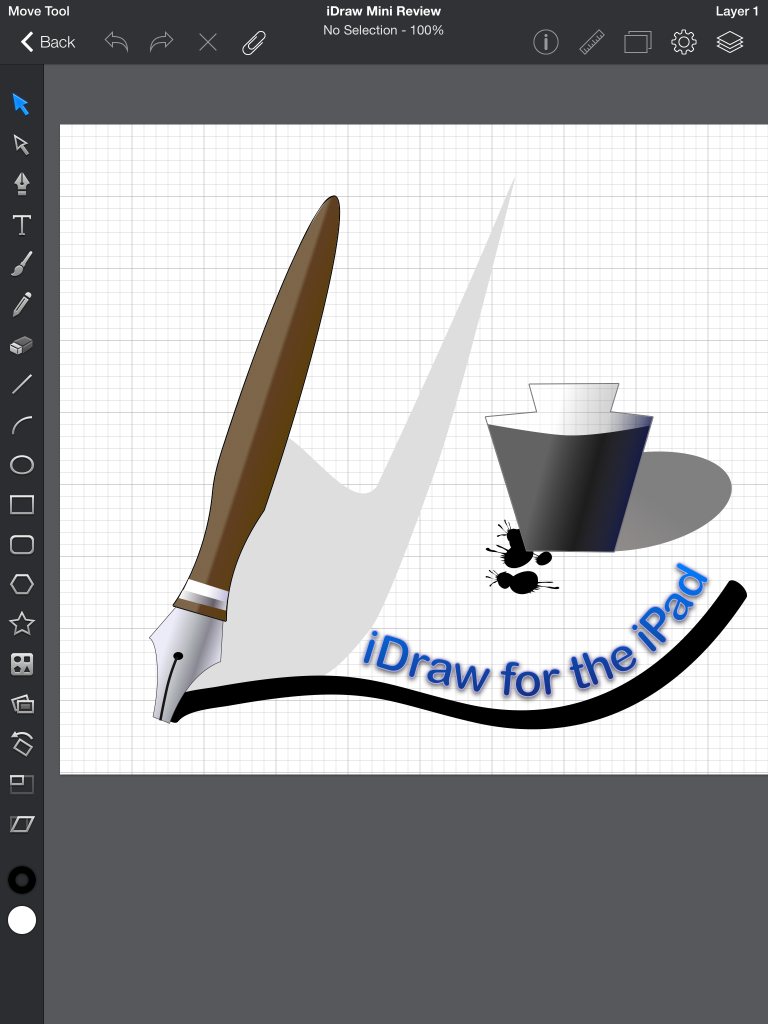
In recent days I have also begun wondering if I might not also be able to get a bit of graphic design work done with the iPad. Adobe does not yet sell an iPad version of Illustrator or Photoshop but there are other options available. Pixelmator is the most recent crossover from the Mac. It has some pretty fantastic photo filters and the handy ability to be passed back and forth to the Mac version. It can also export to psd for crossing over to Photoshop when I’m back to my Mac. That said in the little bit of dabbling I’ve done with it I’m finding some frustrating limitations which I’ll likely explore in more detail soon. Suffice it to say for the purposes of this post that those limitations led me to try out iDraw and that has proven to be a great decision.
iDraw has been available for the iPad since the first iPad release in 2010 and there is a Mac version too though I’ve not tried it. Last week I downloaded the iPad version and have been giving it a spin. Fantastic. This is an app I can use to get real design work done. I’ve not yet used it for a client project though that will come soon enough. I’ve done enough with it in a few hours to know what it is capable of. Not surprisingly, it’s not as fully featured as Illustrator or Photoshop but it does have the most important tools and they perform very well. In fact, the iPad handles everything I’ve tried to with iDraw with ease.
I created the example image in my first spin with the app. Shape building, styling with gradients, adding text to a path are all very straight forward. I started with the rectangle tool and then used the pen tool to begin adding new points and then used the path tool to make my pen handle and tip. Apply stroke and gradient and then tweek. As with Illustrator, all the objects are put on one layer but layers are supported and easy enough to create. I used the same process for creating the inkwell. Styles include drop shadow, inner shadow, inner and outer glow. Multiple instances of these effects as well as multiple fills can be applied to each object. Very handy to be able to apply multiple gradients to single objects.
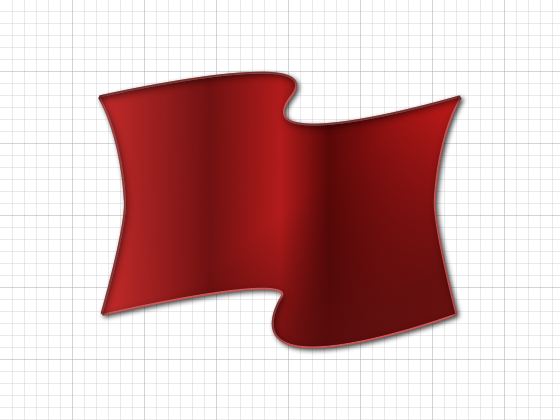 The brush tool is very easy to use with width and smoothing options though I only found the one style brush tip. Will need to investigate. Adding text to a brush stroke is easy enough as is styling that text after adding it to the path. Adjusting the path or moving the text to different points along the path are also very easy. As you might expect, there are plenty of object options such as alignment, path combinations and more.
The brush tool is very easy to use with width and smoothing options though I only found the one style brush tip. Will need to investigate. Adding text to a brush stroke is easy enough as is styling that text after adding it to the path. Adjusting the path or moving the text to different points along the path are also very easy. As you might expect, there are plenty of object options such as alignment, path combinations and more.
When you’ve finished you have quite a few options for using and sharing images. Before sending to any of the iOS 8 app extensions for sharing (Transmit, Facebook, Twitter, etc.) you have the option to choose the file size, resolution, and format: pdf, svg, psd, png or jpg.
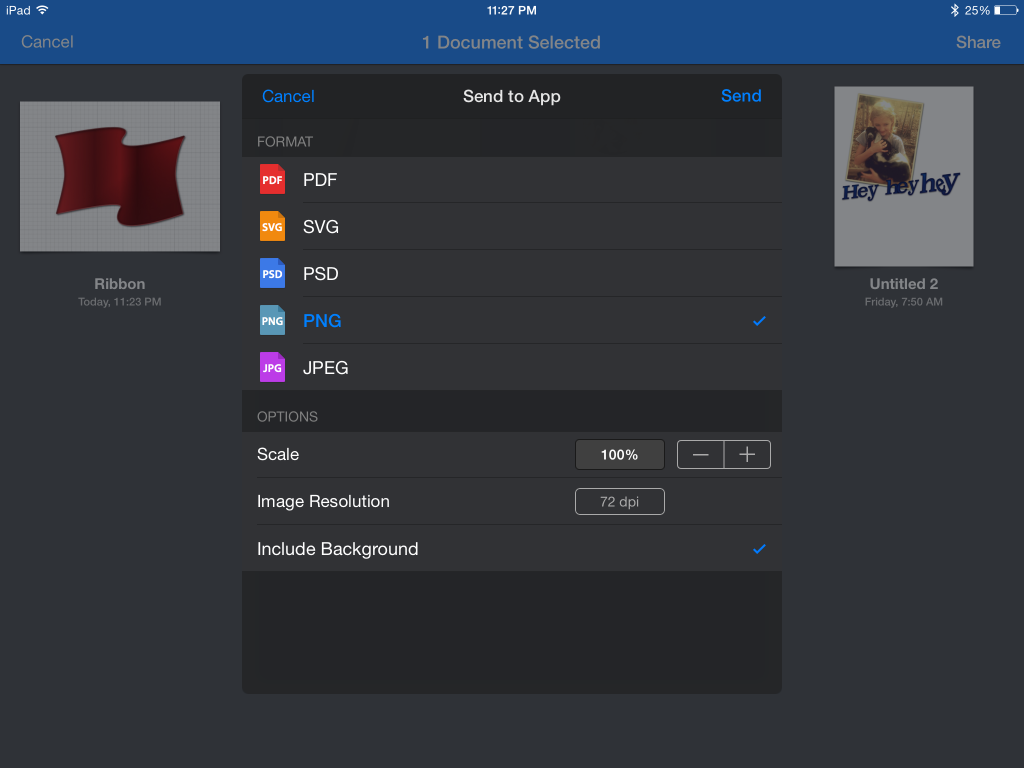
Tim Cook Proud to be Gay
Progress in The U.S., slow but steady! Another step today with Tim Cook: “I’m Proud to be Gay”:
I don’t consider myself an activist, but I realize how much I’ve benefited from the sacrifice of others. So if hearing that the CEO of Apple is gay can help someone struggling to come to terms with who he or she is, or bring comfort to anyone who feels alone, or inspire people to insist on their equality, then it’s worth the trade-off with my own privacy.Well done and worth reading.
Work at Home: My Setup
After years of using only Mac laptops, the most recent being a 2011 MacBook Air, I made the decision in the winter of 2014 to transition to a desktop Mac. Kaleesha was writing her first book and needed a better laptop so I took the opportunity to make the move. My reasons were for choosing the MacMini (late 2012): price and my decision to begin sitting and standing rather than working in a reclined position. I’d tried this with the laptop but it just didn’t take. A MacMini would leave me no choice but to be at the desk.
I’d been using an iPad since the first iteration in 2010 and was pretty confident that it would serve well as a laptop replacement for my off hours browsing or any tasks that didn’t require a Mac. This has been the perfect set-up for me.
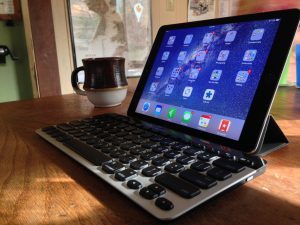 Most of my work on the Mac is either graphic design or html/css coding. All design work is taken care of with the usual Adobe apps and the web work via Panic’s excellent Coda. Other usuals: Safari, Mail, Wunderlist, Fantastical, Byword, iBank, Paperless, Pages, Numbers and Keynote. Oh, and iTunes which not only serves me but the whole house.
Most of my work on the Mac is either graphic design or html/css coding. All design work is taken care of with the usual Adobe apps and the web work via Panic’s excellent Coda. Other usuals: Safari, Mail, Wunderlist, Fantastical, Byword, iBank, Paperless, Pages, Numbers and Keynote. Oh, and iTunes which not only serves me but the whole house.
On the iPad 3, recently upgraded to the iPad Air 2*, my main apps are Feedly, Transmit, Byword, Drafts, Twitter, Numbers, Fantastical, Wunderlist, Scanner Pro, Kindle and iBooks. As an amateur astronomer SkySafari gets alot of use along with Numbers for recording observations with the iPad that are later transfered to FileMaker Pro on the Mac.
With Mavericks and iOS 7 the convenience of always in sync everything has been a fantastic feature making switching between devices mostly frictionless. It’s only gotten better with Yosemite and iOS 8 both of which have performed exceptionally for me. Practically everything seems to sync in one way or another. Some examples: Transmit and Coda bookmarks, Wunderlist tasks, iWork documents, Byword documents and practically everything else.
One possible change to my workflow: Pixelmator. I’ve used it a bit on the Mac but now with a new powerful iOS version I intend to become more familiar with it. That I can now do real image editing and design work on an iPad with this much power (and finally 2 GB of RAM) is a potential game changer. When combined with apps such as Transmit and extensions I anticipate that I now have a device which will make on-the-go web work that much easier as my ability to use and share files between apps and devices is a fantastic new feature of iOS8. For example, a photo emailed to me by a client is easily saved to photos, edited with a Pixelmator extension and then opened in Transmit for upload to a server.
Of course, having said all that, I don’t want to go back to my former portable-based workflow. I’m VERY happy with my standing desk and intend to continue working there but it is very helpful to now have the option of getting more work done when I need to be away from my desk.
Two other bits of gadgetry worth mentioning.
The iPhone 5C has been great for keeping up with email, twitter and RSS as well as reading books. Other tasks for the iPhone usually include scanning documents with Scanner Pro, remote control for iTunes and AppleTV. The hotspot feature has also been a real plus for getting things done while on the road.
My newest office kit is a Logitech K811 which I’ve only had for a few days. I think this is the best keyboard I’ve ever used. Bluetooth pairing with multiple devices was super simple and switching between them as fast as hitting a single button. The keyboard turns off automatically when not in use and turns on instantly when my fingers are placed on it. The slightly concave keys feel great and unlike the Apple keyboard (my previous favorite) this keyboard has backlighting. It’s not super light but light enough that I won’t mind taking it out with me. The iPad/keyboard combo is still far lighter and more compact than a MacBook Air. As I write this Kaleesha is creating a sleeve for the iPad/keyboard combo. Sweet.
- A note about the Air 2. It was gifted to me by my aunt and uncle and I mention them because until the release of the iPad they had no intention of ever owning computers. Like several others in my family (my mother, grandmother, aunt, and a few others) had previously only ever used their desktop computers for playing those old school card games. For various reasons they had not used the internet at all or only very little. All of them are now daily users of the internet in a variety of forms. For several of them their iPads were their introductions to Apple and they now own iPhones as well.
Branching Out
Kaleesha has been featured at the Feminine Collective:
Born Again - One Woman’s Journey Out of Religion - Feminine Collective
Don't Forget the Words
Frank Chimero, The Second Trip-Up:
A young designer is beaten over the head with typefaces, grids, and rules—and rightfully so—but typography can act as a smoke screen. There is so much to learn about the letters that it’s easy to forget about the words. Once a designer has the typographic skills in their pocket, anyone with their head on straight realizes ugly words in beautiful typefaces are still pretty dumb. I tripped over this observation while struggling to make good designs and clear illustrations for idiotic articles and muddled ideas. I then fell into something I’m still attempting to understand: words are the most explicit example of clear thinking.
Work at Home: Taking Breaks
As a freelancer I have the freedom to work at a pace that I control with as many rest breaks as I think I need. It’s one of the many great reasons to freelance and it’s not just a matter of convenience but also of health and productivity. my tendency is to work a two-three hour block between breakfast and lunch and then between lunch and dinner. Within those blocks I work 45 minutes with 15 minute breaks. I’m not using any kind of app to remind me to break so this fluctuates a bit and is usually influenced a bit by my surroundings or natural needs to take a bathroom break or to get a drink. It’s just as common for me to work thirty minutes and break for ten minutes when I feel the need.
There are days when I am between projects and on such days my rest/work pattern falls away completely. I’ll take care of miscellaneous tasks such as scanning receipts or clearing out accumulated desk clutter between extra time catching up on social media and RSS feeds. It’s not uncommon for me to have one such day durning the normal “work week”.
In short, it is a natural cycle of focused work balanced with rest and relaxation as needed. The result is a sense of productive well being and and a body of work that I and my clients are happy with.
Work at Home: Using a Standing Desk
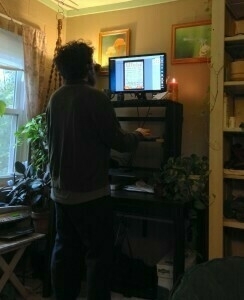 This past spring, after years of working at a desk or while laying in a bed with a laptop (most recently a MacBook Air), I decided to begin standing while doing any work at the computer. I’d already transitioned from the laptop which Kaleesha was using to write her first book and had moved over to a Mac Mini at the desk full time. Two things happened shortly after this transition. The first was that the increased time sitting at the desk without the ability to move around to work led to increased back pain. This led to the second which was a bit of renewed research into the benefits of standing to work. I’d previously tried it out but had never pushed myself to make it my primary position to work and with the laptop it was too easy to just sit or lay somewhere.
This past spring, after years of working at a desk or while laying in a bed with a laptop (most recently a MacBook Air), I decided to begin standing while doing any work at the computer. I’d already transitioned from the laptop which Kaleesha was using to write her first book and had moved over to a Mac Mini at the desk full time. Two things happened shortly after this transition. The first was that the increased time sitting at the desk without the ability to move around to work led to increased back pain. This led to the second which was a bit of renewed research into the benefits of standing to work. I’d previously tried it out but had never pushed myself to make it my primary position to work and with the laptop it was too easy to just sit or lay somewhere.
In March, with increasing pain and a scale that insisted on inching slowly higher I decided to make a few changes. First was to stop sitting while working. I used a bit of extra plywood in the shed to construct a raised display shelf and, a bit lower, an adjustable shelf for my keyboard and trackpad. It took just a couple hours to put together and paint. I built it with the notion that during the transition period I might want to move the display down and sit occasionally but never did. I’ve been standing ever since. Well, I have been known to sleep on occasion and sit at the table for dinner. I also spend a bit of time lounging with the iPad on the bed or couch throughout the day but work time, 3–6 hours a day, is standing.
Six months in and I can report that I am very happy with the decision. During the first few weeks I was often aware of standing and had a little pain in my legs and feet. I could get the work done that I needed to get done but it wasn’t effortless. Today I regularly stand for 1–2 hours at a time with no thought to the fact that I’m standing. Put another way, standing has become the natural way that I work. I usually put in an hour or two between breakfast and lunch and another 1–3 hours between lunch and dinner. Occasionally I’ll need to do an hour or two in the evening. My schedule changes a bit day to day which is quite nice as it allows for some flexibility and variation between standing, sitting and reclining.
Of course it should be noted that standing is only one aspect of a healthier lifestyle. I can’t say that I’d seen any weight loss for most of this period. In fact, due to my diet I’d seen an increase over the past year which continued after I began standing. I’ve since gotten back into walking 2 miles a day and in July I began tracking my diet more closely, both practices have helped me steadily and slowly drop half of the weight I needed to drop. By January I will have achieved my goal weight and will go into the new year with the healthy habit of standing while working.
Excellence is not Perfection
There’s been a good bit of hub-bub lately about how Apple has over-extended itself. Whether it’s complaints about iOS 8 bugs or a bendy iPhone 6 it all seems to be much ado about nothing. No doubt there are bugs but this is nothing new. No company releases a major new upgrade to any operating system without bugs, not even Apple. Go back through the releases of iOS or Mac OS and you’ll see that every release has bugs and most releases have at least one or two big bugs. This is nothing new so why pretend it is? Frankly, given the ever increasing complexity of the Apple hardware ecosystem, my hat’s off to them for keeping it together as well as they have. We expect excellence and I think that’s what we get. Excellence should not be confused with perfection.
The big bugs with iOS 8 that I’ve seen mentioned the most in my Rss and Twitter feeds? HealthKit needed an immediate fix so 8.01 was pushed out sooner than it should have which turned the just released iPhone 6s into iPods. No doubt a big problem which was rectified by 8.02 a day later. Aside from that I’m seeing the usual anecdotal complaints of instability. Another issue, not so much a bug as an issue of different timing for the different upgrades, are iOS 8 users upgrading to iCloud drive who were unaware of how this would effect their ability to access their iCloud documents from Mavericks-based Macs. Apple presents a warning for those choosing this option. Perhaps they could have done more? On my devices I’ve had no instability. My personal experience with iOS 8 has been nothing but excellent.
The critiques I’m seeing on iOS 8 seem to include the notion that Apple is rushing things and should slow down releases but this is a damned if they do, damned if they don’t scenario because it’s often said that they are not releasing enough. Not enough hardware, not enough software. Complaints about a lack of updates for iWork or iPhoto or iTunes being too bloated… the list goes on. I’m the first to admit that I often wish for new features or updates more often but that said I’m also usually very happy with what I have. Again, excellence not perfection. Most incremental updates have proven great. Major app rewrites such as iMovie several years ago or iWork last year have come with a bit of pain, no doubt. Not just in the adjustments needed for users to new interfaces and workflows but also in lost features (or temporarily missing features) and bugs.
With each new season of changes and updates there is a predictable outcry from the Apple using community about changes and bugs which is followed by a few weeks or months of bug fixes and, in the case of the major app rewrites, the return of many if not most missing features. The end result is that within a few weeks or a couple months everything is back to “normal”. iOS or OS X has returned to a stable state with it’s new features and everyone is happy. By January or February the end of the world has passed and by April Apple geeks are anxiously awaiting WWDC. By August they are beside themselves as they await the new iOS around the corner. The cycle repeats.
But along the way Apple has built an increasingly complex and collaborative ecosystem which is, increasingly, taken for granted. I remember the days of OS 8 and 9 and near daily crashes of my Mac. A week without a forced restart was nearly unheard of. I considered an uptime of 3 days amazing. Now? My Mac goes weeks without a restart, often months. Often restarts are only after OS updates that require it. That is absolutely fantastic. My iPad and iPhone? The same. Not only do my devices just keep running but they now work together in ways I would not have expected before. In just a few weeks even more so with the release of Yosemite.
But right now, even before Yosemite, my 2012 Mac Mini with 4 GB of RAM is my daily workhorse with 8–12 apps open at any given moment. An example: Safari, Mail, Wunderlist, iTunes, Illustrator, Photoshop, Messages, Calendar, Filemaker, and Coda. I bounce from one to the other with no crashes. None. This MacMini also functions as the household iTunes server. iTunes, often derided as bloated and somehow a problem, performs fantastically in our household. Always on, it serves 6552 songs, 170 GB of television shows, and nearly 1 TB of movies out to multiple iOS devices including 2 Apple TVs and a couple Macs. I wirelessly back-up my iOS devices to iTunes with no effort on my part beyond initial set-up. The only time I have to plug in an iOS device is to charge it or import photos into iPhoto.
I regularly open or create documents from iWork or Byword on my Mac which are then edited, seamlessly, on my iPad. Sometimes it is the other way around. Thanks to extensions in iOS 8 and apps like Panic’s Transmit I can easily use my iPad to access and edit an image or html file on my Mac Mini which I can then upload to one of my servers. With the same device and app I can share an image on my Mac’s desktop to Facebook or Twitter with just a couple taps. I can use my iPhone to control media on my AppleTV or stream a video from a Mac to AppleTV. These little sharing workflows are things we do in our household everyday, many times a day without a second thought and more often than not they work flawlessly. We just assume they will work and they do. The list goes on and will only grow as apps are updated or new ones created. With the release of Yosemite it will get better with Handoff and Continuity. I’ve already taken phone calls to my iPhone on my iPad, with Yosemite I’ll be able to take (or make) a call on my Mac.
It’s a fantastic time to be in the Apple ecosystem and I’m just as excited about the release of Yosemite as I was iOS 8. In the first weeks there will be bugs and the usual chorus of complaints will erupt on my feeds. I’m not suggesting that people should not mention the problems with Apple releasesd, be they OS, software or hardware, only that they keep a bit of perspective. Honest and factual critique helps us move forward, dramatic headlines and exagerated problems do not. Take a deep breath. Expect excellence from Apple, not perfection.
Finding Paw Paws
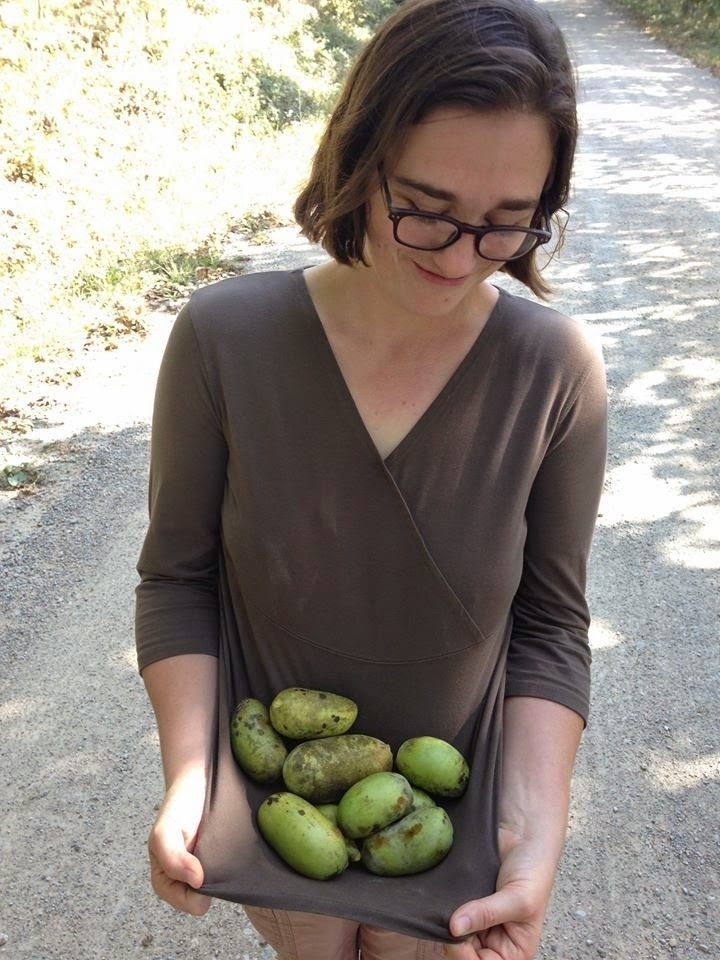
So we're on our walk this morning and Kaleesha stops and says she smells paw paws. This woman has a really good nose! 10 harvested!!
There's nothing quite like the sweetness of a simple life lived deliberately.
The Milky Way Reflected
Original, high res version here: http://apod.nasa.gov/apod/image/1409/AtacamaSaltLagoontudorica2320.jpg
Just another day in Wonderland
The Unhappy Medium
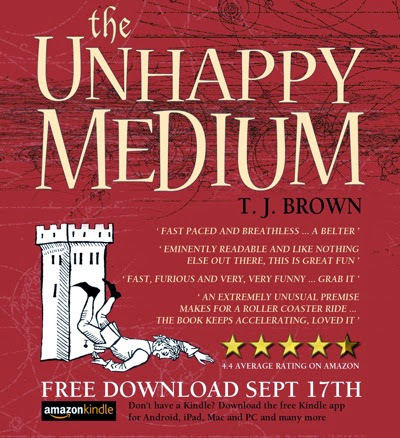 Kaleesha has a great write-up on skeptic and atheist indy author Tim Brown’s excellent work of comedy, “The Unhappy Medium”. Read her review and then download the Kindle Book for free tomorrow. Or buy it for only $5 today! Absolutely hilarious and well worth your time! From the book:
Kaleesha has a great write-up on skeptic and atheist indy author Tim Brown’s excellent work of comedy, “The Unhappy Medium”. Read her review and then download the Kindle Book for free tomorrow. Or buy it for only $5 today! Absolutely hilarious and well worth your time! From the book:
When even the laws of physics let you down, the absurd, the ludicrous and the frankly impossible may be all you have left.
Dr Newton Barlow has everything a theoretical physicist could ask for – a glittering career both in the lab and on television, a beautiful wife, and best of all, the opportunity to promote his rock-solid certainty that supernatural and religious beliefs are nothing but complete and utter hokum.
But Barlow is about to take a tumble. Mired in accusations of fraud, incompetence and malpractice, Newton is cast out from the scientific establishment and ejected from the family home. With his life in tatters, he descends into a wine-sodden wilderness. Then, after three lost years, Barlow is suddenly approached by his old mentor and fellow sceptic Dr Sixsmith with an extraordinary proposition, an offer that Newton simply cannot refuse. There’s just one small problem: Dr Sixsmith is dead.
Thrown headlong into a new reality that simply shouldn’t exist, Dr Newton Barlow is about to come up against the best and the worst of human nature: tooled-up vicars, paper-pushing ancient Greeks, sinister property developers, a saucy rubber nun and possibly the most mean-spirited man ever to have walked the earth (twice).
From the dusty plains of Spain to the leafy vicarages of Hampshire, Dr Barlow will have to contradict everything he ever believed in if he wants to save this world – and the next.
Racism ruined my dinner
For me Ferguson started when I was around 12 years old. Let’s say, 1981. I was at the doctor’s office and my doctor was making small talk. I don’t remember the exact question he’d asked but it was something along the lines of did I like football and who was my favorite player. I don’t remember the name I gave him, but I’ll never forget the line that came out of my mouth after. “But you know them niggers all look the same.” My mom was, as I recall, embarrassed. I don’t recall the exact correction that I received when we got back into the car. She was not happy. I wish I remembered the specifics of our exchange after because I think it would be very telling in describing everything that has come since. It might explain how, some 33 years later, a really nice home made pizza dinner was spoiled by a conversation about Ferguson (which is really an ongoing conversation about race). Actually, it wasn’t really a conversation about race so much as it was my parents and I talking at each other with neither side actually listening. It escalated and I lost my temper. I got up and walked out slamming the door behind me and that was that. I trudged up the hill and found a place in the rocks to sit.
Tic tock. The house is quiet now. No raised voices. Just a clock and the quiet hum of the refrigerator inside. Outside, the night-time chorus of frogs and insects is in full swing. Maybe I have to go back further than that doctor visit. That is my first recollection of race as an issue but I knew, even then, that we had moved south to Arnold when I was 9 because of something called “bussing.” I didn’t fully understand it but knew it had something to do with me not being allowed to go to the school down the street because I might have to take a bus to another school while other kids, black kids, would be brought into my school in Spanish Lake. The solution was to leave the city and move to a relatively young suburb with a brand new school that was just opening up. I started school there in the 4th grade.
It wasn’t until the early 90’s that my family began discussing race again. I’d gone to college and studied sociology and what’s more, I’d taken it a step further and become an “activist.” For me, becoming an activist started with becoming more knowledgeable about U.S. foreign policy and military spending. Next, it was learning about “political prisoners” and groups such Amnesty International. This was followed by environmental activism and in particular learning of the “Greens” and anarchism. Essentially, as I was learning (via university studies) about things such as “social stratification” and “systemic racism” I was also becoming increasingly “radicalized” in my activism. What I was only partially aware of at the time was that I was also stepping away from the collective values of my family. It was a gradual move.
By the mid 90s my activism was in full swing. It wasn’t something my parents understood. My parents are not all that political or religious. I’ve always thought of them as sitting on the sidelines. They worked hard and focused on raising their 3 kids. They were sociable with the neighbors in our subdivision in Arnold. We watched plenty of tv and lived what I consider (looking back on it) a fairly typical life in middle class white suburbia. I didn’t consider my parents raging racists, but I did consider them racists, as I do today. But I also consider myself a racist. I don’t think I know a person in America who is not a racist. I’d imagine that that there are many young people who have not yet learned the racism of the larger culture but suspect that they will not be spared. We live in a country that is still steeped in racial problems and we are all still a part of it.
When Michael Brown was shot in early August, the heated arguments about race that had been dormant in my family for most of the past decade were suddenly rekindled. To my knowledge I stand alone in my immediate and extended family on the issue of race in the U.S., as well as our reaction and interpretation of Michael Brown’s killing. We’re back to conversations that go nowhere as they try to explain their side and I try to explain mine. But, as is often the case, we’re not really learning or understanding each other so much as we are talking at each other. Sadly, last night, not only did we spoil our pizza dinner, but we also set a terrible example for the kids. They didn’t see or hear adults that were respectful of one another attempting to understand one another. They saw adults not listening and not communicating. They saw me get angry and storm out of a conversation and out of the house. A perfect microcosm of the U.S. and our inability to communicate not only about race, but also about our other problems.
I wonder how much of this failed communication is cultural and how much of it is human? Particularly regarding race and violence; why do we seem to have such difficulty understanding these problems? I suspect that it is not a problem specific to the U.S., but we do have our own unique racial history and that history helped shape the culture we live in today. No doubt it is a very complex process. It’s not even a question of just race as the equations must include economics, politics and geography. A discussion of race is going to be different based on our locations and our specific family histories, as well as our educational backgrounds. So many variables to consider.
As I sat up on the rocks, angry and sad at our inability to communicate, I felt stuck. I still feel stuck. I think of my family, our society, our species and I wonder about our way forward. How do we begin to communicate? How do we deepen our understanding on the issues that divide us?
Our Star
Fantastic image of our local star! Absolutely stunning.
The diameter of the Sun is about 109 times that of Earth, and it has a mass about 330,000 times that of Earth, accounting for about 99.86% of the total mass of the Solar System. Chemically, about three quarters of the Sun's mass consists of hydrogen, whereas the rest is mostly helium, and much smaller quantities of heavier elements, including oxygen, carbon, neon and iron.
The Sun is a G-type main-sequence star (G2V) based on spectral class and it is informally designated as a yellow dwarf that formed approximately 4.567 billion[b] years ago from the gravitational collapse of a region within a large molecular cloud. Most of the matter gathered in the center, whereas the rest flattened into an orbiting disk that became the Solar System. The central mass became increasingly hot and dense, eventually initiating thermonuclear fusion in its core. It is thought that almost all stars form by this process. The Sun is roughly middle age and has not changed dramatically for four billion[b] years, and will remain fairly stable for four billion more. However, after hydrogen fusion in its core has stopped, the Sun will undergo severe changes and become a red giant. It is calculated that the Sun will become sufficiently large to engulf the current orbits of Mercury, Venus, and possibly Earth.
Skeptics on the Creek
Skeptics on the Creek at Make-it-Do Farm! Good food, drink and conversation. Missing in these photos are the kids who were upstairs all night playing D&D.
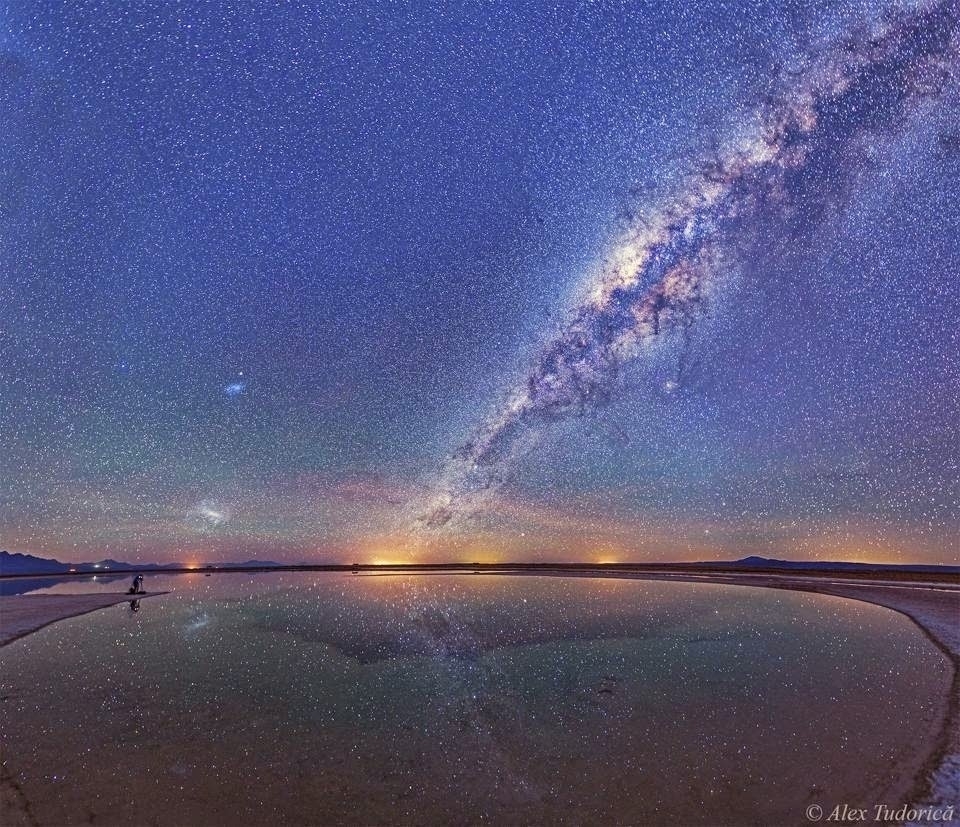




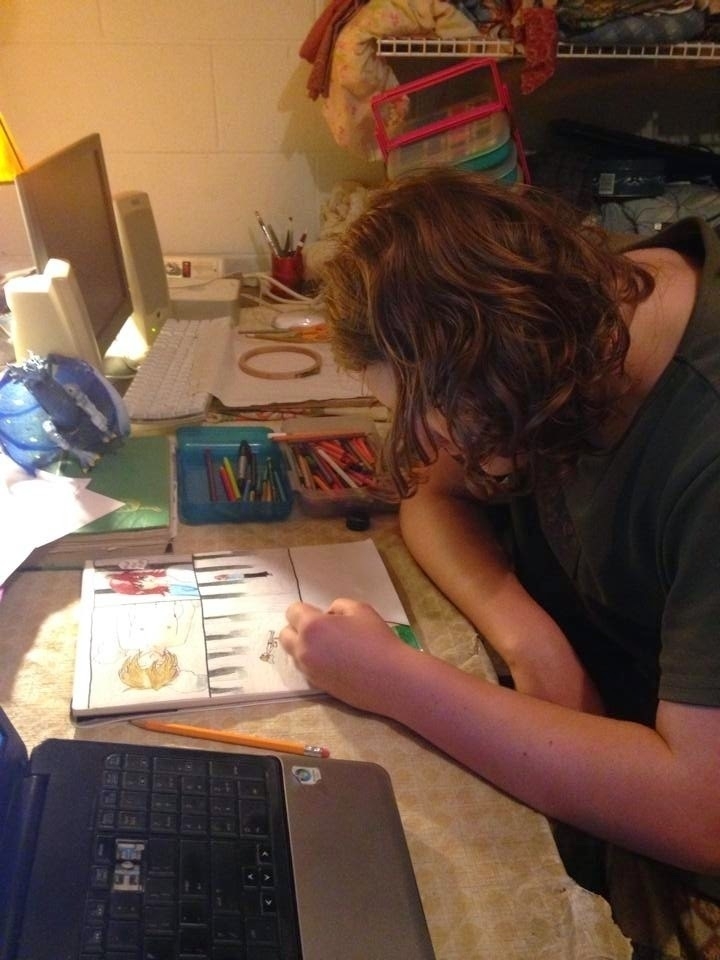 Farra loves to write and loves to draw so now she has started her first comic book. As she would say (in her best Spock voice): "It's only logical."The girl has talent.
Farra loves to write and loves to draw so now she has started her first comic book. As she would say (in her best Spock voice): "It's only logical."The girl has talent.